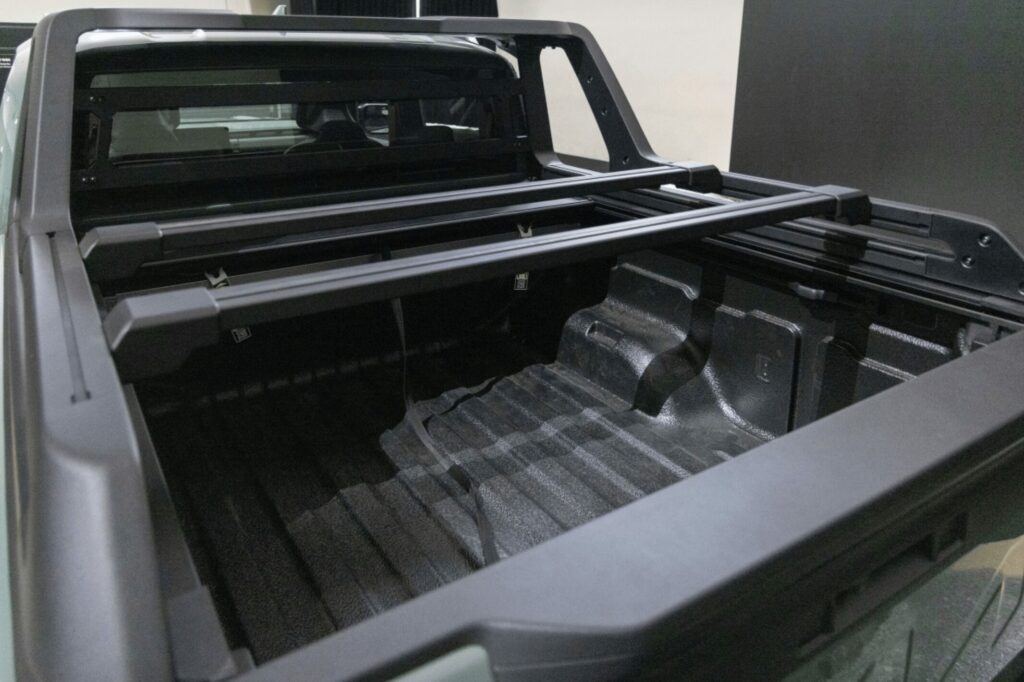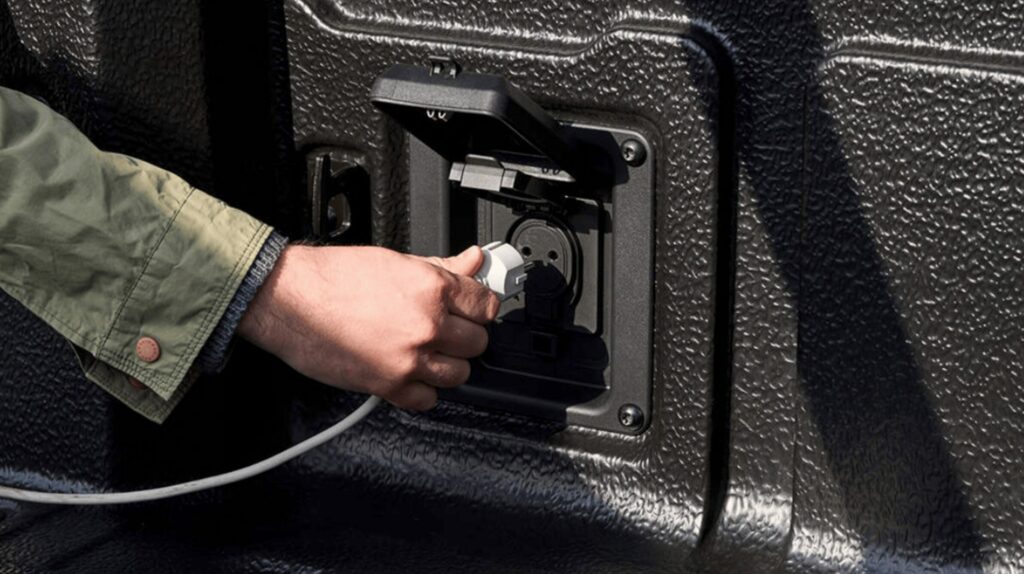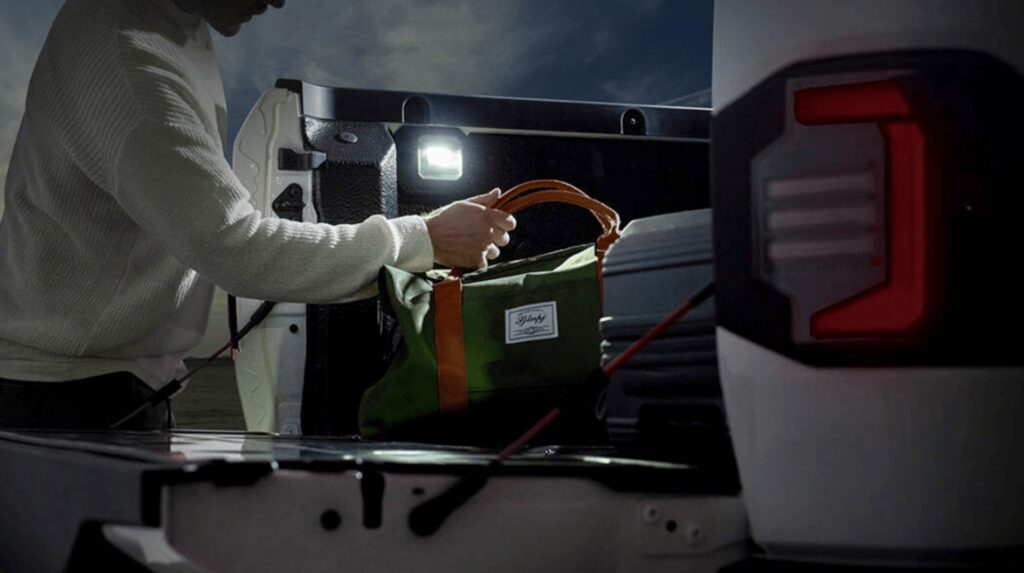Kia has held the Tasman Tech Day, focusing on its first-ever body-on-frame pickup truck technology and design. Designed for both off-road and on-road stability, the Tasman aims to be a family-friendly pickup rather than just a utility vehicle. The Korean automaker is making a bold statement in the global pickup market by offering a versatile vehicle that caters to adventure seekers and everyday drivers alike.
A New Benchmark in Pickup Truck Design
During a press conference in Gangnam, Seoul, Choi Dong-ho, a researcher from Hyundai Motor Group’s MLV Project 1 team, emphasized Kia’s commitment to innovation.
“Targeting global markets, Kia’s first authentic pickup truck embodies the brand’s renowned expertise,” said Choi. “It blends the rugged essence of a body-on-frame pickup with the comfort of a family SUV. Addressing the limitations of traditional pickups, the Tasman incorporates convenience features and enhances second-row seating comfort.”
The Tasman’s body-on-frame structure was developed exclusively for this model. Compared to Kia’s Mohave, the Tasman’s body strength is improved by 64%, and torsional rigidity is enhanced by 32%. Additionally, key components such as the transmission were positioned at the top of the frame, raising the overall frame height to improve off-road driving performance.
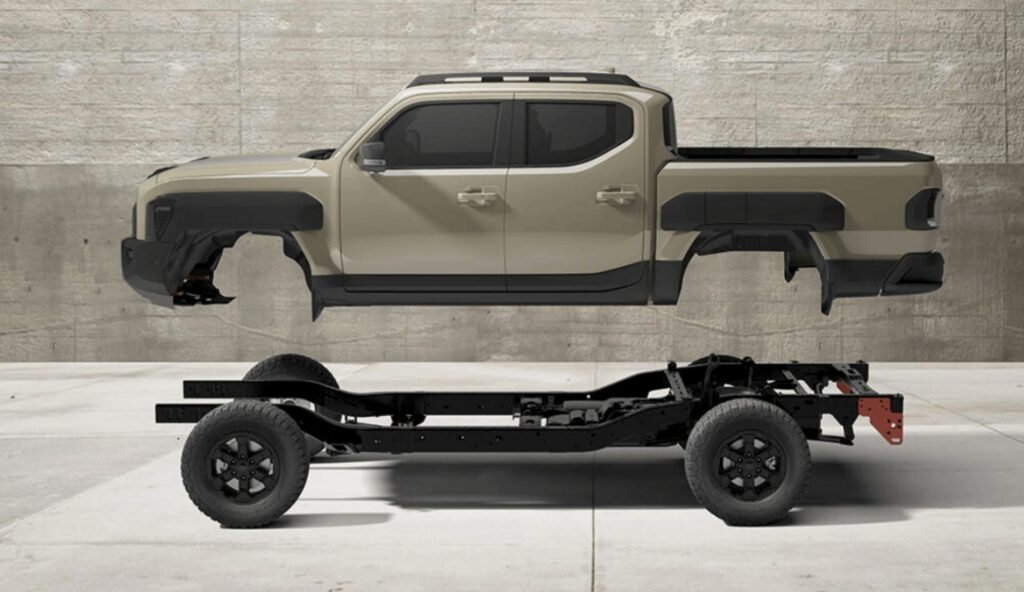

Unparalleled Off-Road Performance
To ensure top-tier off-road capabilities, the Kia Tasman has undergone rigorous testing over five years in extreme conditions, including Korea, the United States, Sweden, Australia, and the UAE. The Tasman supports various terrain modes, including Snow (SNOW), Mud (MUD), Sand (SAND), Rock (ROCK), and an AI-driven Auto Terrain mode that adjusts settings based on driving conditions.
The vehicle is equipped with an electronic four-wheel-drive system, featuring a two-speed Active Control Transfer (ACT) system that delivers engine power to the front and rear axles. Drivers can choose from four driving modes: 2H, 4H, 4L, and 4A. Additionally, the Tasman X-Pro trim includes a rear electronic differential lock (E-LD) and an electronic limited-slip differential (E-LD), ensuring smooth handling in challenging terrains.
For enhanced off-road capability, the Tasman boasts an approach angle of 28.9 degrees, a ramp angle of 23.7 degrees, and a departure angle of 25 degrees. The X-Pro trim improves these numbers to 32.2 degrees, 28.9 degrees, and 26.2 degrees, respectively, further solidifying its off-road credentials.
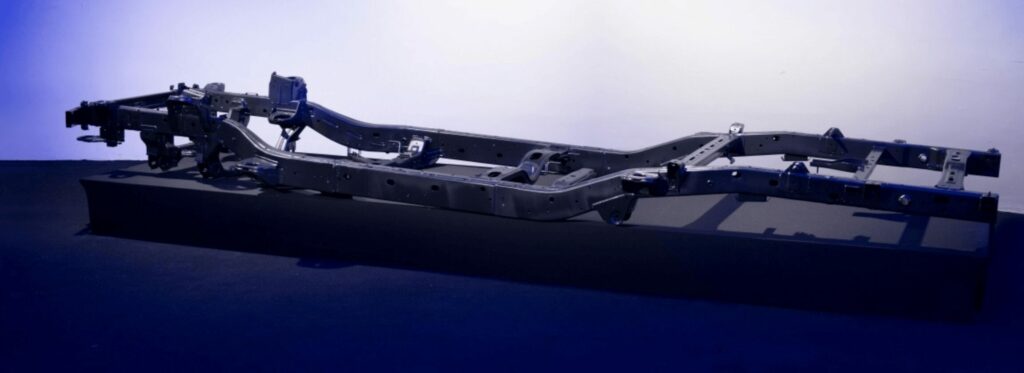

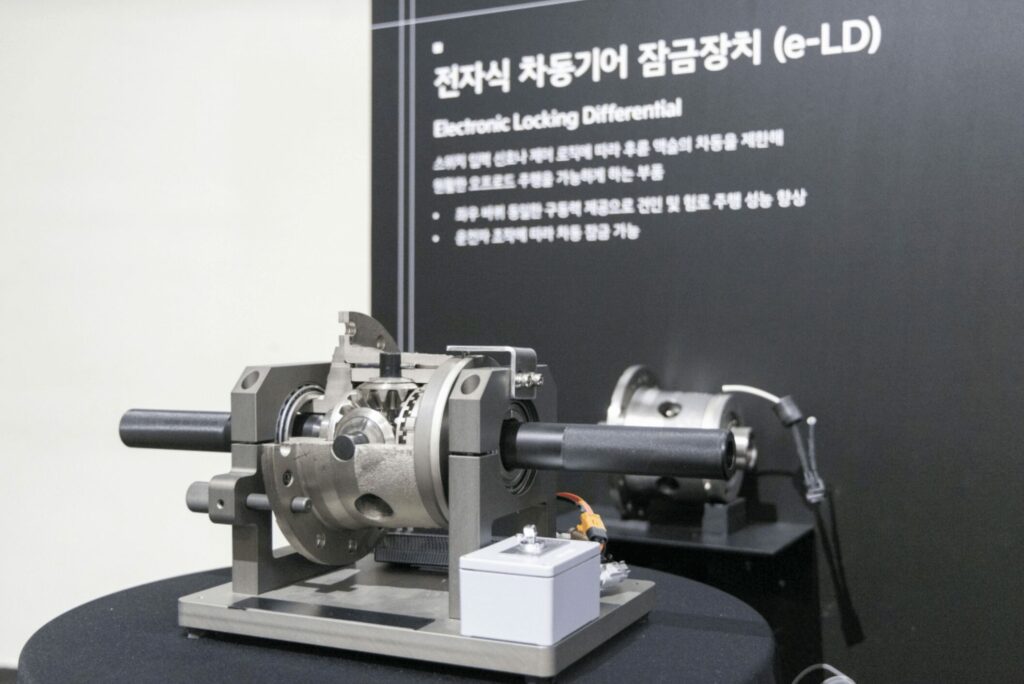

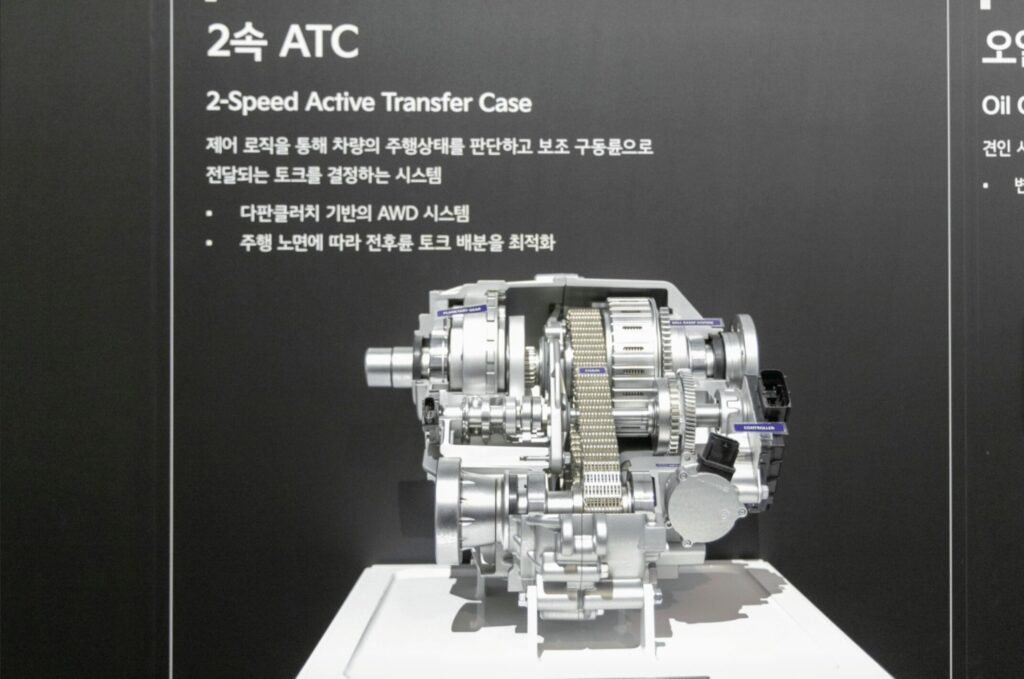

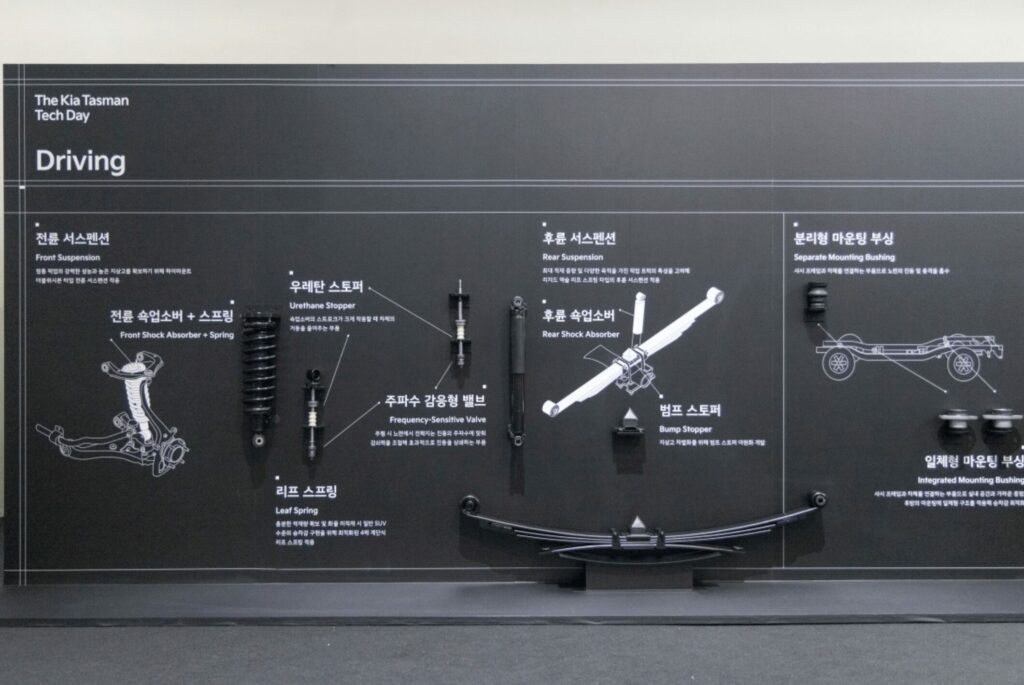

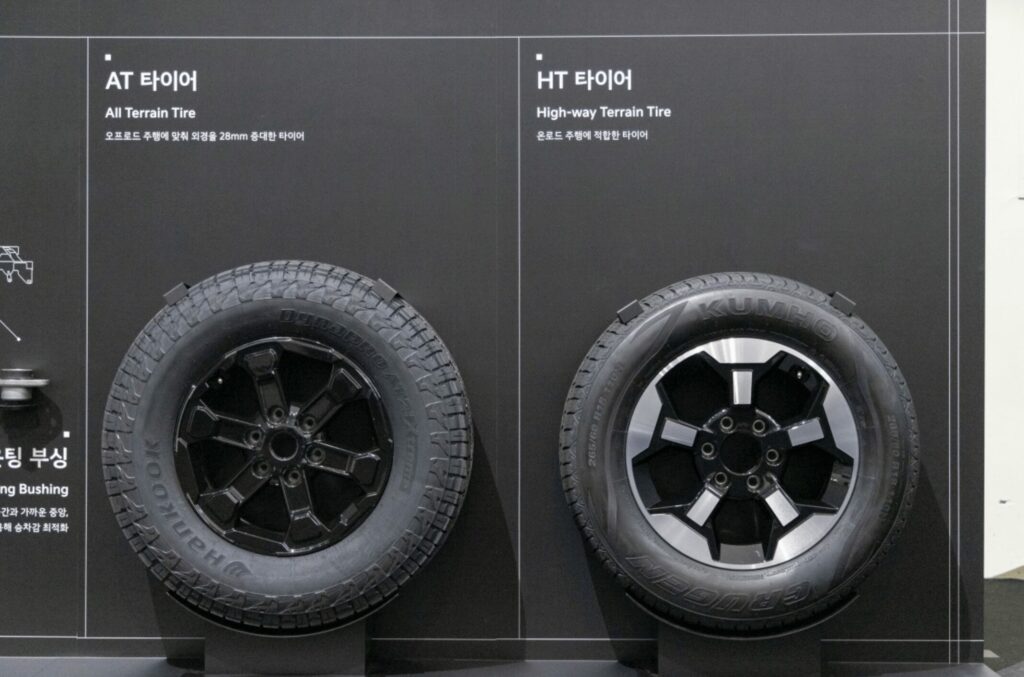

Smart Technology for Enhanced Driving Experience
Kia has equipped the Tasman with an advanced infotainment system that provides real-time vehicle diagnostics, including coolant and oil temperatures and battery voltage. Off-road-specific features include a low-speed cruise mode, ground-view monitor, and off-road data pages that enhance driving control in rugged conditions.
The Tasman also supports trailer brake control, trailer stability assist, and a tow mode that adjusts shift patterns based on towing weight. With a towing capacity of up to 3,500 kg, the Tasman is well-equipped for hauling heavy loads.
SUV-Level Comfort and Quietness
The Tasman offers a best-in-class cabin length of 2,214mm, with sliding and reclining second-row seats—making it the first pickup in its segment to provide SUV-like rear-seat comfort. First-row seats are also designed to be 30mm thinner than conventional seats, maximizing legroom for rear passengers.
To enhance ride comfort, Kia has introduced a separate mounting bushing connecting the chassis and body, along with front and rear frequency-selective shock absorbers and urethane bump stops. The Tasman has also been optimized for noise, vibration, and harshness (NVH) reduction, with improvements in engine noise insulation, cabin sealing, and intake noise minimization.
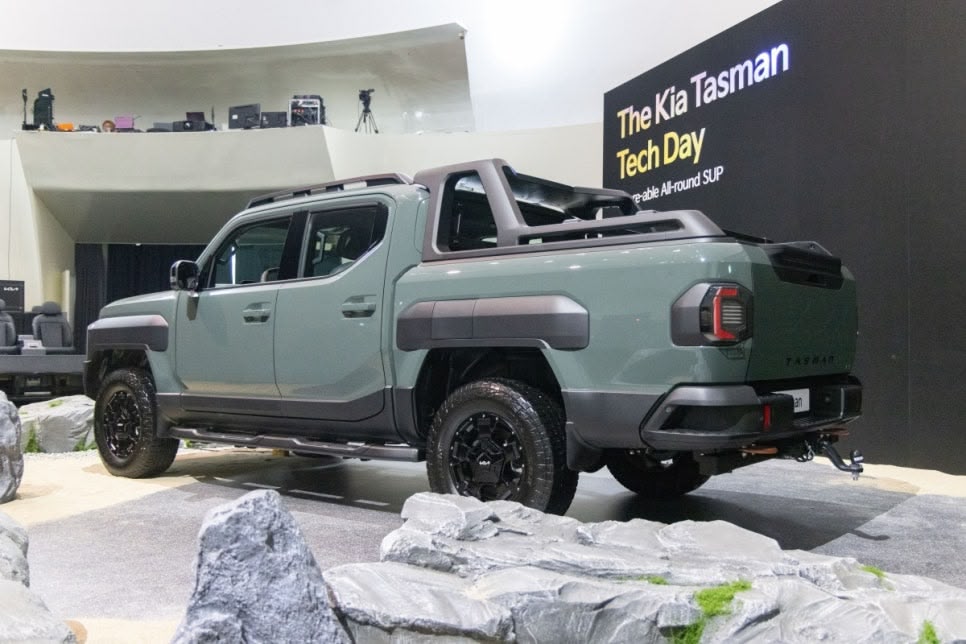

Dimensions and Practicality
The Tasman measures 5,410mm in length, 1,930mm in width, and 1,870-1,920mm in height, with a 3,270mm wheelbase. While its overall footprint is designed to fit domestic parking conditions, Kia has expanded the cargo bed for greater usability.
The cargo bed measures 1,512mm in length, 1,572mm in width, and 540mm in height, with a width of 1,186mm between the wheelhouses. It has a maximum payload of 700 kg and includes features such as a divider system, bedside lighting, tie-down rings, and a 220V inverter for enhanced functionality.
For safety, the Tasman incorporates over 55% high-strength steel in its construction. The front and center side members use 2.9T ultra-high-tensile steel, improving crash resistance and structural integrity.
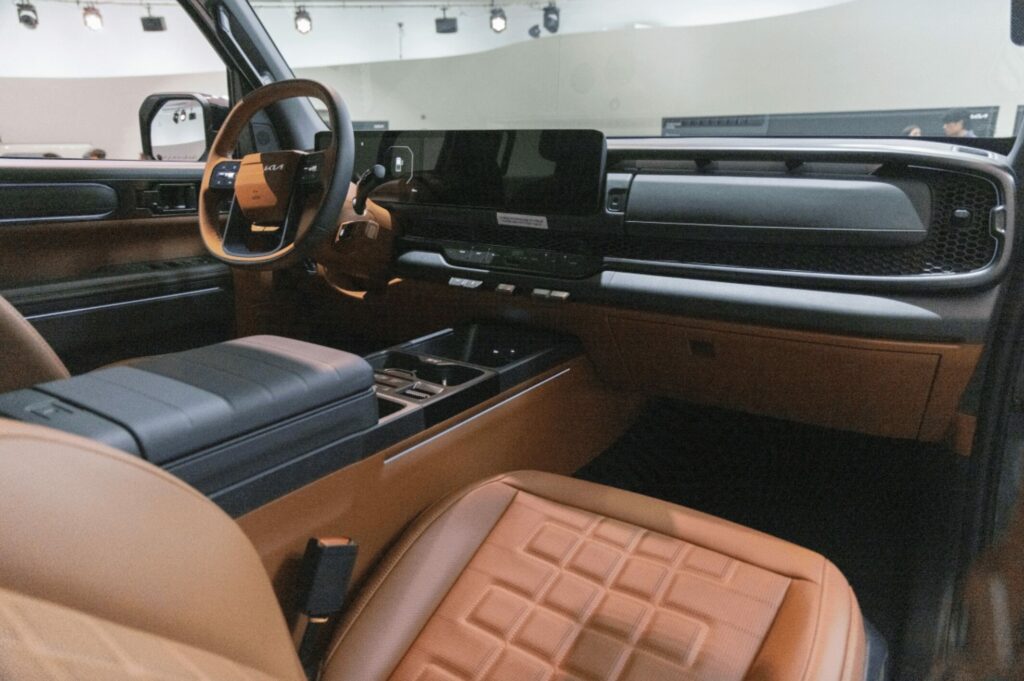

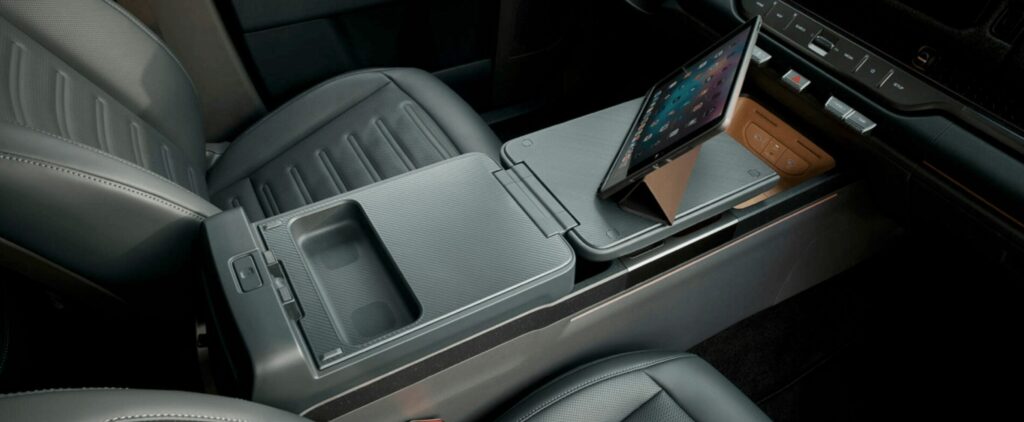

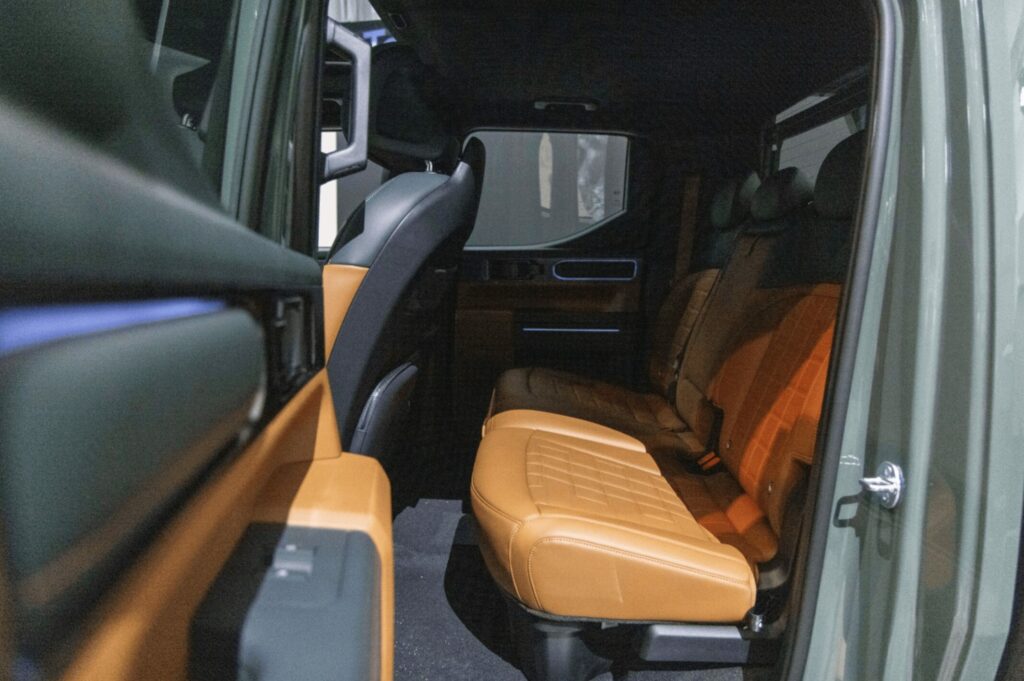

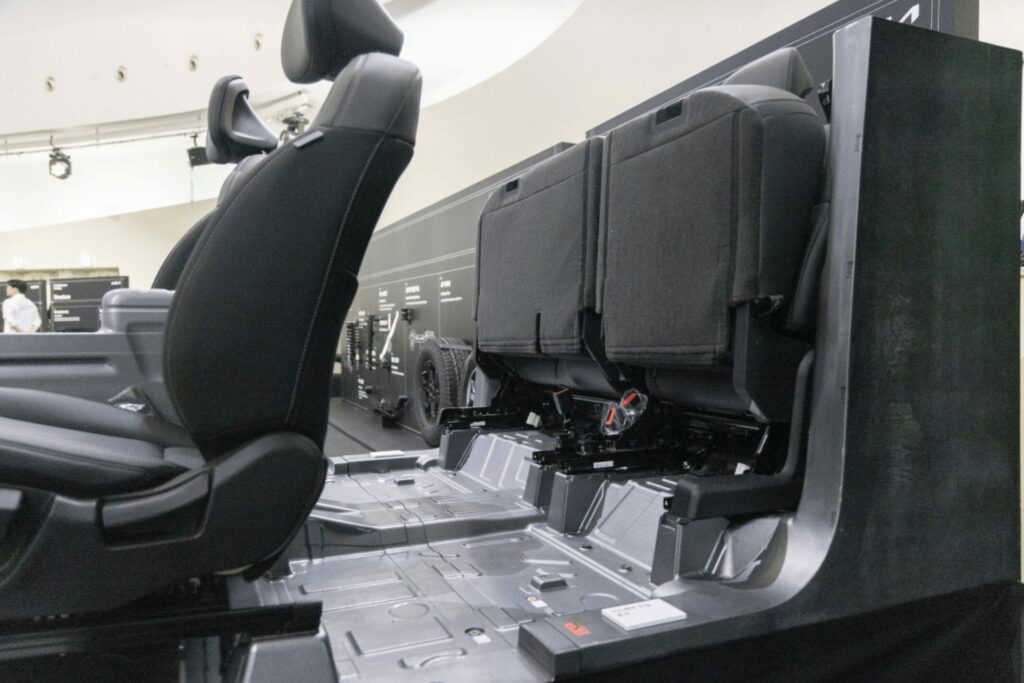

Performance and Efficiency
The Tasman is powered by a 2.5-liter turbocharged gasoline engine producing 281 horsepower and 43 kg.m of torque, paired with an eight-speed automatic transmission. Fuel economy is rated at 8.6 km/L with 17-inch rear-wheel-drive models and 8.1 km/L with four-wheel drive. To improve cooling, Kia has added an air-cooled transmission oil cooler and an oversized fan larger than the one used in the 3.5L turbo engine.
Customization Options
Kia offers a range of genuine accessories for the Tasman, including single and double-decker canopies, sports bars, side steps, bed covers, and sliding bed options—allowing buyers to personalize their vehicle to fit their lifestyle needs.
Pricing and Market Availability
Set to launch in 2024, the Kia Tasman will primarily target the Korean and Australian markets, with pricing ranging from 37.5 million won ($25,600) to 52.4 million won.
Conclusion
The Kia Tasman is poised to disrupt the pickup truck market by blending off-road toughness with SUV-inspired comfort and cutting-edge technology. Whether tackling extreme terrains or city streets, the Tasman sets a new standard for versatility, performance, and everyday usability. With its advanced drivetrain, premium features, and robust build, Kia’s first pickup truck is ready to make a lasting impact in the global automotive market.
